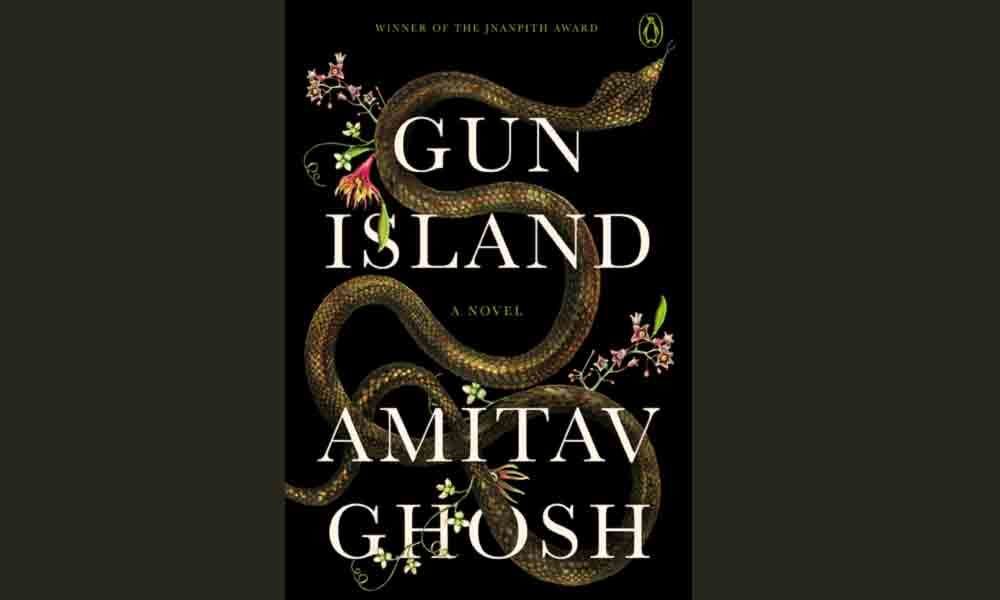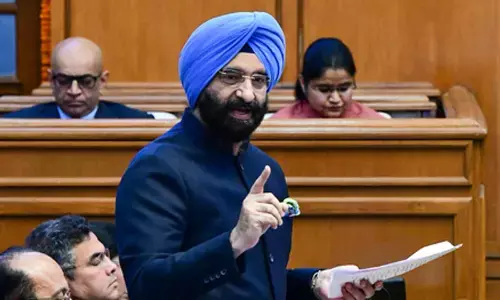Magic of the Bonduki story
‘Gun Island’ by Amitav Ghosh is a beautifully realised novel which effortlessly spans space and time. It is the story of a world on the brink, of increasing displacement and unstoppable transition
Journeys to distant lands, migration and ancient connections between civilisations are recurring themes in Amitav Ghosh's books. His latest offering, 'Gun Island' is a story of travel and migrations, overlaid with myth and folktales, and the deepening crisis of climate change. In his last book, 'The Great Derangement: Climate Change and the Unthinkable', Ghosh had questioned why artists and writers of fiction had ignored climate change in their creative work.
In 'Gun Island', Amitav Ghosh entwines the impact of climate change on migration and displacement with an old Bengali folktale that connects the mangrove forests of Sundarbans to the city of Venice. The story connects the fast depleting mangrove forests of the Sundarbans, the raging forest fires of Los Angeles and the slowly sinking city of Venice. On his annual sojourn in Kolkata, Brooklyn-based dealer in rare books, Dinanath (now an Americanised Deen) hears the tale of Manasa Devi, the goddess of snakes and her battle to turn the merchant Chand Sadagar or Bonduki Sadagar into a devotee.
Deen travels to the isolated island to the small temple the merchant had built to appease the goddess. From the temple and its panels of mysterious drawings and symbols and an encounter with a King Cobra, Deen and his young companions, Rafi and Tipu (who was bitten by the deadly snake) are sent hurtling to their separate journeys that eventually lead them to Venice.
Though the book is titled 'Gun Island', according to Ghosh, the term 'bundook' is derived from al-Bunduqiya, the Arabic name for Venice. The Bonduki myth links Venice and India through the journeys of the 17th century and present-day migration to Europe. It also links the life altering impact of climate change on migration and the displacement of humans and animals. There is the unnatural behaviour of animals, endangered species, stranded marine animals, beaching of a pod of Irrawady dolphins, poisonous spiders venturing into new regions with rising temperatures, and voracious shipworms hollowing out wooden structures onshore in Venice.
The Gun Merchant is forced to leave his home as he loses his wealth and his family in his tussle with the goddess. Still pursued by the Devi while on his travels, the merchant is captured by pirates, sold as a slave, then freed by his master, finds a treasure trove of cowries – the shells used as currency in the Indian Ocean coastal region and reaches Venice, the great trading port of the 17th century. The Mediterranean is going through unseasonal weather with storms and devastating floods that came to be known as the little ice age. The merchant is forced to return to Bengal to make peace with the goddess and build her a temple which protects the local villagers till it is swept away by the rising waters and frequent storms that ravage the Sundarbans in the 21st century.
Deen's travels take him from Kolkata to Brooklyn, Los Angeles to eventually reach Venice. Diffident and uncertain, Deen struggles over his limited finances till he is offered a translator's job to interpret for the Bangladeshi migrants in Venice for a documentary film. Bustling Venice with its hordes of tourists is serviced by a colony of Bangladeshis, who cook the pizzas, run the restaurants, man ice cream carts and the markets of the great tourist city. Many of them have made the perilous journey by bus, truck and minivan; pushed across the borders of Bangladesh, India, Pakistan, Iran and then to Libya, forced to pay out additional sums of money at critical times or fall into the hands of organ harvesters.
Deen's voyage of discovery is assisted by Piya, the marine biologist who arranges his visit to the Bunduki temple, Cinta, the celebrated Italian professor, Rafi and Tipu who is still struggling to reach Venice on the refugee blue boat. The journey is interwoven with recalled memories and experiences which help Deen decode the riddles of the temple panels and the Bonduki Sadagar ballad. There are strange visions and premonitions about specific events, unlikely coincidences (Deen narrowly escapes being hit by masonry falling from high buildings on two occasions). Words of the Bonduki legend acquire different meanings when associated with places and events from the Gun Merchant's own journeys.
Among the myth and uncanny events, Ghosh brings in the realities of contemporary life; the impact of changing climatic patterns on human and animal life and migrants and human traffickers using modern technology to find the best routes to evade local authorities. Catastrophic events and natural disasters have forced people out of their lands, and modern technology has provided the means to work out ways in which to reach Europe and Western countries. Unlike the exuberance of the Ibis trilogy, has a clear message that at times tends to overpower the Bonduki story as it shows up the present-day realities of migration and climate change.

















